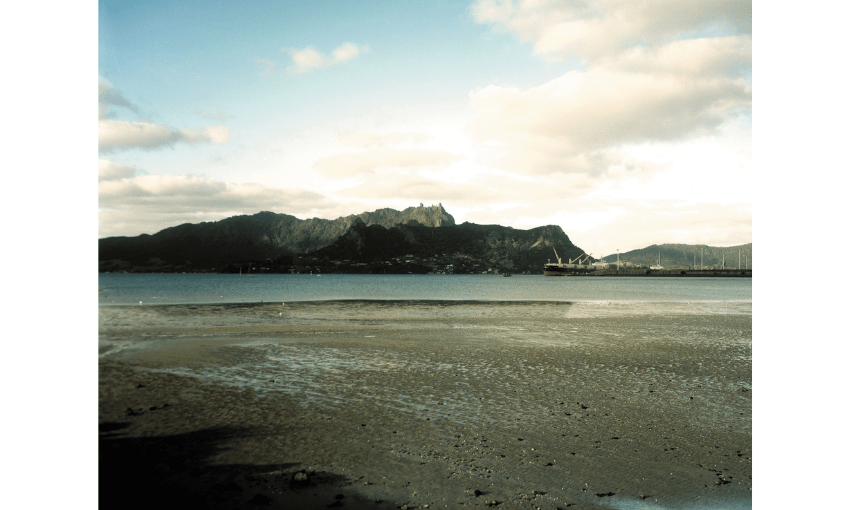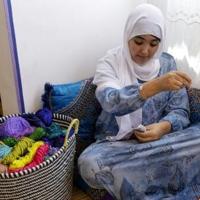The first book on women and art in this country since the late 1980s questions the premise of the book itself – the term women.
“The older you get, the more the things that don’t seem vital to you are not worth your energy,” says Kirsty Baker, her Scottish accent softened with Es turning into Is and swallowed consonants. The Wellington-based art historian, writer and curator has recently published the first book focused on women and art in New Zealand in almost 40 years. “It’s showing that you can tell a history of art right up to the present in this country that doesn’t need to include any men,” she says. “Sorry Colin.”
Sight Lines: Women and Art in Aotearoa is a beautiful and hefty book, hardbound with over 400 pages. But it’s not an impenetrable brick – while its history starts in the Māori traditions of adornment and ends today, that timeline has been sliced into 36 pieces, ordered consecutively, which cover individual artists or sociohistorical movements. There’s plenty of images, many of them new even to me, who spends afternoons in the art section of the library, flicking through books. Sight Lines can easily be read from front to back, or just dipped into by topic or artist.
Though the bulk is written by Baker herself, there’s eight other authors who she asked to contribute in their specialty areas. Each part is introduced with a page of block colour, so that the rag is lined with possible entry points. The design, by one of the best book designers in the country, Katie Kerr, gives visual and physical structure to the book’s form. Pages feel carefully ordered to open up the content. And it’s beautiful.
Inside, Baker has resisted ever referring to male artists, and turns away from a sequence of artistic movements which so often form the narrative of our art history. By doing so the book isn’t a gendered appendage to existing art histories, but instead forges new stories. For all that “women” is on its cover, this is not a book about women artists, not really. “The term woman artist is very loaded with a lot of patriarchal, white biases.” says Baker, in what’s almost an understatement. I know plenty of artists, technically women, who would cringe to be labelled so. The term seems restrictive and belittling – no-one wants to have their work defined primarily by their gender – unless that’s its subject. And while there are no men in the book, not everyone is a woman either – “when I approached her [Yuki Kihara] for the book, she was like, ‘but I’m not a woman. I’m fa’afāfine – which is not the same.’” You will notice there’s an “and” between the words on the cover – women and art – this is an important, if subtle, distinction.
The term woman is under investigation in the book. In the introduction, Baker writes “I recognise that the word operates as a flattening kind of shorthand, insufficient to capture the gendered realities of the lives caught within these pages. Nonetheless, I use it for want of a more porous and inclusive word in English.” This want to take aim at gendered distinctions is present in the art covered by the book. Sometimes an undercurrent, and at other times front left and centre. Artists like Aliyah Winter refuse the biological determinism sometimes applied to the term – “she uses her work to articulate the complexities around transness and representation, and the kind of ways that challenges a lot of the feminist discourse that has come before,” says Baker.


Entwined in the investigation of the term woman, is a critique of feminism(s). Much of New Zealand’s feminist history is recounted in the book, and all of it through today’s lens. On page 66, Baker writes, “even in the earliest stages of the burgeoning women’s movement, lines of tension were evident beneath the surface.” She goes on to recount the presentation of a paper titled ‘Māori Women in Pakeha Society’ at the 1973 United Women’s convention. Mira Szászy, president of the Māori Women’s Welfare League, challenged attendees to consider inequality beyond gender. “Her concerns that the movement was driven by the ‘middle-class based aspirations of Pakeha women’ would prove to be largely valid,” writes Baker. In the following years the conventions grew increasingly fraught as it became evident that they represented a predominantly white, heterosexual movement. The focus on gender as a unified identifier resulted in the marginalisation of Māori and Pacific people. This was not an intersectional feminism.
Even today, “there is a crisis in feminism,” says Baker. She says it’s been made very apparent in some of the discourse around trans exclusion. “For any of the elements of feminism that have been useful to continue to be useful, we need to contend with that and figure out a way of moving past this kind of feminism being really about one type of woman.” This is one thematic thread which runs through the book – but there are others.
Baker has, with a very light touch, traced a lineage of artists who question their relationships with land and place – a topic crucial to any cultural discourse on a colonised land. The very first image is a photograph by Fiona Clark, Waiongona, Puketapu Hapu made in 1981. Clark, Pākehā, documented the waterways, coasts and land of Taranaki. In the mid 1970s she offered her photographic services to Te Ātiawa in support of their Waitangi Tribunal claim, Wai 6. The claim fought against industrial development that would cause irreparable damage to the land.
Later in the book the photographs of contemporary artist Ngahuia Harrison (Ngātiwai, Ngāpuhi) depict the shoreline of Te Moana Nui o Toi te Huatahi. In these photographs the architecture of industry, particularly the Marsden Point oil refinery, co-exist with jagged volcanic ridges and muddy intertidal zones. The harbour, once a site of customary practices now a site of industry which provides both prosperity (employment) and degradation. Harrison’s photographic and archival practice begins to show the entanglements of people, place, legislation, cultural and physical change which are inscribed in the land.


Sight Lines covers about 40 artists in a history spanning more than 200 years. Already some reviewers have commented that the book does not include X, Y or Z artist. But Baker never intended to write a comprehensive history, choosing to step deeply into a few practices rather than compile a list. “I’m very upfront about the fact that this is, you know, it’s very specific and quite idiosyncratic because it’s what interests me,” she says of the collection of artists she chose to include. That’s not to say it’s not varied: there are weavers, film makers, painters, sculptors, photographers, a few well known artists and others who have not had as much recognition. The selection is weighted towards artists who are alive and practising today – because “my heart really does lie in the contemporary, and also, you know, you can talk to living artists.” Baker spoke at length to these artists about their practices, and included words directly from their conversations, so that they were active in forming the book too.
Sight Lines is a book that should be well thumbed in every library and art room across the country, but for many people, including me, it’s a book you will want to keep at home, treasured and never far from reach for years to come.
Sight Lines: Women and Art in Aotearoa, by Kirsty Baker ($70, Auckland University Press) is available to purchase at Unity Books.
This post was originally published on this site be sure to check out more of their content








